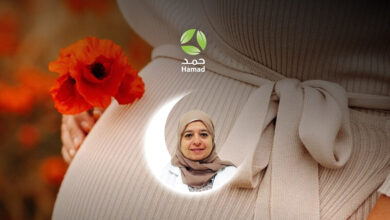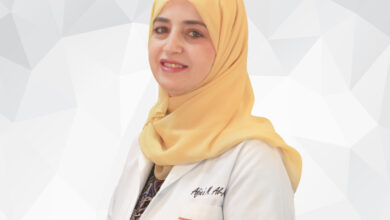The changing healthcare scenario in GCC… Creating new opportunities in medical tourism
Dr. Prem Jagyasi An award-winning strategic leader, renowned author, publisher and highly acclaimed global speaker

A reverse trend in medical tourism is being observed in the GCC region with the rise in the number of inbound medical travelers. Outbound medical tourism prevailed in this region but the reversal of scenario is generating new opportunities in medical tourism.
The entire gulf is witnessing an exponential population growth with expatriates making up 49% of it. Increased life expectancy is contributing to the growth of senior population, and the estimated population is likely to cross 50 million by 2025 reports Health Beyond Borders. Along with, the rising incidences of cardiovascular diseases, diabetes, obesity and cancer have overburdened the GCC healthcare forcing the governments to think otherwise.
Inadequacy in healthcare led to outbound medical tourism:
The situation was different sometime back when beyond the border healthcare of GCC nationals was funded by the government. Inadequacy of specialized care especially in oncology and cardiology spurted outbound medical travel. People relied more on the evolved healthcare system of Germany, UK, US and other Asian nations. Among the GCC nationals surveyed in 2011, Kuwaitis showed the highest inclination towards abroad medical care and Saudis seemed to be least inclined reports Gallup Survey.
Initiatives to curb public healthcare expenditure burden – the need of the hour:
GCC spending in abroad medical care stands approximately $7.2 billion to 12 billion USD of which 80% accounting for government spending. UAE alone spends $2 billion closely followed by Kuwait government’s $1.8 billion spend as per Kleos Health Analysis Survey on Middle-East Healthcare.
The Gallup survey further showed that although most of the GCC nationals were satisfied with domestic medical care, government expenditure for outbound medical tourism still posed a severe burden. Funding abroad medical expenses have been a huge drainage in the country’s exchequer which needed to be checked. The region has felt the dire necessity to revamp the healthcare infrastructure to build the confidence among its citizens about its quality medical care and support.
Creating new opportunities in medical tourism:
The GCC countries realized the potential of medical tourism as an important driver of the economy and have been focusing to grab a bigger share of the pie. Considerable public and private investments in expanding and upgrading the existing healthcare infrastructure have reversed outbound medical tourism by offering affordable high-quality treatments and services. The introduction of MHI (Mandatory Health Insurance) to shift a part of healthcare expenditure burden to the private sector has fostered the rapid growth of private facilities helping in further expansion of healthcare facilities and services.
Trimetric’s Construction Intelligence Center (CIC) database gives an interesting figure about the speedy development of GCC healthcare infrastructure running 119 active projects worth $46 billion.
GCC gaining position as a medical tourism destination with UAE and Saudi Arabia leading the pack:
According to Alpen Capital, UAE’s medical tourism market was valued at $1.6 billion in 2012. Dubai is the first emirate to include medical travel in its policy goal. As reported by Business Monitor International (BMI), the risk-reward ratio in this sector in the UAE is 62.5 as in Q216 making it the most attractive medical tourism market in the MENA region. Saudi Arabia stands next with 59.7.
The Dubai Healthcare City (DHCC) launched in 2002 as the world’s largest healthcare free economic zone, aimed towards developing the region as a prime health and wellness destination has caught the attention of global health travelers.
Dubai enjoys a special geographical advantage that has boosted its potential to grow as a medical tourism hub. Its proximity to other Gulf nations and Africa, cultural affinity, tourism attractions and the growing perception of the availability of state-of-the-art healthcare facilities and services have contributed to its emergence as a medical tourism hub.
A melting pot of different cultures, Dubai stands as one of the pronounced cosmopolitan metropolia in the world. Medical travelers from the MENA region, Russia and CIS countries are crowding Dubai to avail a plethora of specialized treatments and services. The city witnessed the footfall of approximately 300,000 medical travelers from outside the UAE in 2015 growing stupendously from almost 107, 000 in 2012 as stated by Forbes Middle East. In 2016, Dubai health facilities received 325,000 medical tourists registering an overall growth of 9.5 % in the number as reported in Khaleej Times. The Dubai Health Authority (DHA) is targeting 500,000 medical travelers by 2020.
Saudi Arabia unraveling its medical tourism prospects:
The Kingdom of Saudi Arabia (KSA), the largest country in the Arabian Peninsula popularly known as the Land of Two Mosques, is fast gaining pace in medical tourism. Riding on religious tourism, KSA has the potential of attracting not only 1.6 billion Muslim population but also others from different parts of the world.
The government is bent on revamping the healthcare infrastructure by encouraging construction of state-of-the-art treatment facilities through self-funding and help from private players. In the entire GCC region, the KSA has the highest value of healthcare projects worth nearly $14 billion (SAR 52.5 billion) according to BMI’s Infrastructure Key Projects Database.
The country’s growth in medical tourism is evident from 220,000 foreign travelers from different corners of the world seeking treatment in 2011 as reported by the Private Health Association (PHA).
The Journal of Saudi Arabia reports that foreigners spent over 400 million Riyals for medical treatment in 2010. Travelers from UK, France, Germany, USA and Iraq do consider the KSA for medical tourism.
Challenges in GCC medical tourism:
- If opportunities are in plentiful, challenges are no less either.
- The long-standing mindset of GCC nationals regarding heavy reliance on abroad medical facilities may still cause a hindrance in domestic healthcare development.
- More state-of-the-art secondary and tertiary care facilities need to run full-scale operation considering the rising incidences of critical noncommunicable diseases.
- Low hospital bed penetration compared to the rest of the world and limited availability of trained medical professionals and qualified physicians are still major areas of concern.
- Over-reliance on expatriate medical professionals may invite bigger problems in future. If they leave the country, it would be not easy to find a replacement.
- Stringent immigration laws causing visa restrictions is another major impediment to medical tourism.
- Lack of proper marketing strategy and initiatives to get positioned in the global medical tourism map.
Need to partner and promote through smart product and packaging:
Developing unique products according to the preferences of targeted medical tourists and packaging them smartly is the key to drive in more medical travelers. The GCC nations need to concentrate seriously on this. A medical tourism product needs to be incorporated with core values pertaining to quality, safety, consistency and special features to make it stand out from others.
One such step is JCI accreditation, which certainly enhances the value of medical tourism products. UAE leads globally with 192 JCI accredited organizations whereas KSA has 103. All the core features should be presented in a package which is mainly a well-conceived web portal.
DHX – Dubai Health Experience an exemplary medical tourism packaging:
Launched in April 2016, DHX stands as the gateway of information for prospective medical tourists from every corner of the world. The website offers a wealth of information related to treatments, cost, visa, travel, accommodation booking, insurance and Dubai itself. The prospective medical travelers can plan a well-balanced itinerary combining treatment and tourism.
Forging strategic partnerships in medical tourism:
Forging strategic partnerships with recognized hotels, travel agencies, travel companies, healthcare organizations, clinics and other associated service providers is crucial to promote medical tourism of the region. These are the initial contact points of the prospective medical travelers.
The DHX is playing an important role in helping patients with customized travel packages from registered travel agencies ensuring the patient and accompanying members a rejuvenating and fruitful medical tourism experience. The DHX Group has partnered with 45 leading healthcare providers including top grade hospitals, specialized clinics and day care centers. Given the opportunities, medical tourism is poised to be the next big thing in the GCC region. It is to be watched what extraordinary initiatives GCC nations would take to build up the highly prospective medical tourism industry.
















